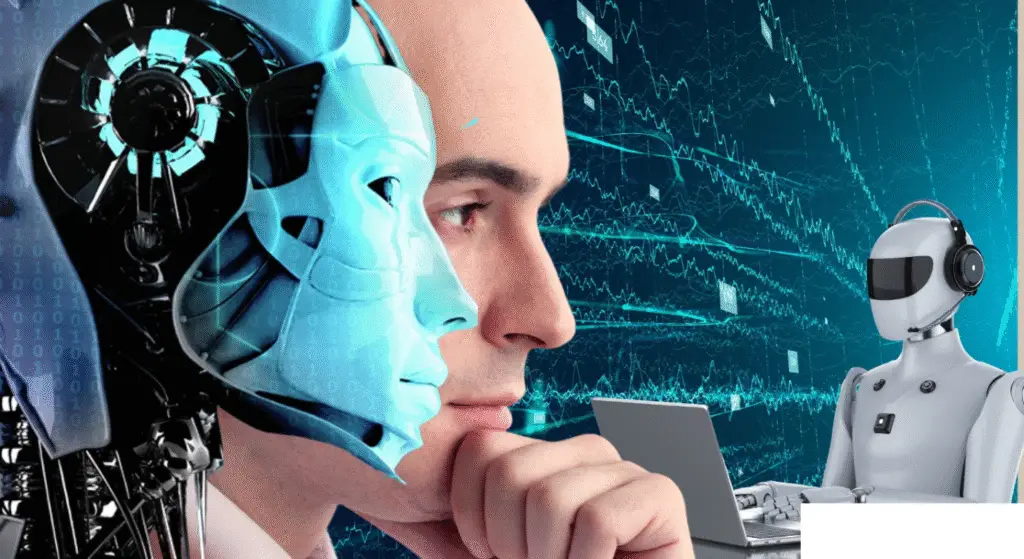In a world that is evolving at an unprecedented pace, technology plays a critical role in shaping how we live, work, and communicate. From artificial intelligence to biotechnology, the latest technological innovations are transforming industries and everyday life. This article explores some of the most exciting technology trends of 2025 and how they are influencing our present and future.
1. Artificial Intelligence and Machine Learning
Artificial intelligence (AI) and machine learning (ML) continue to dominate the tech landscape. In 2025, AI is becoming more intuitive, with models that can understand, generate, and even reason with human-like proficiency. AI-powered tools are being integrated into every sector, from healthcare and finance to education and logistics.
For example, generative AI is now being used to automate content creation, customer service, and coding. Predictive AI models help businesses forecast market trends, optimize inventory, and personalize user experiences.
2. Quantum Computing: Unlocking New Possibilities
Quantum computing is no longer just theoretical. In 2025, major tech companies like IBM, Google, and startups such as Rigetti Computing are pushing the boundaries of quantum processing power. Unlike classical computers, quantum computers use qubits, enabling them to solve complex problems much faster.
Applications include drug discovery, cryptography, and climate modeling. Though mainstream adoption is still in its early stages, quantum technology is paving the way for breakthroughs that were previously considered impossible.
3. 5G and Beyond
The global rollout of 5G networks has significantly enhanced connectivity, speed, and efficiency. As 5G becomes standard in many urban areas, research has already begun on 6G technology. With 5G, latency is reduced, which benefits smart cities, autonomous vehicles, mood keywords, and remote surgery.
This high-speed communication infrastructure also supports the Internet of Things (IoT), enabling millions of devices to connect simultaneously without lag.
4. Augmented Reality (AR) and Virtual Reality (VR)
AR and VR technologies are evolving rapidly, moving beyond gaming into mainstream applications. In 2025, industries like education, real estate, and healthcare are leveraging immersive experiences to engage users.
For instance, students can now explore virtual historical sites, and surgeons can practice procedures in lifelike virtual environments. With Apple’s Vision Pro and Meta’s Quest headsets leading the market, spatial computing is becoming a significant trend.
5. Blockchain and Web3 Development
Blockchain technology is extending beyond cryptocurrencies to revolutionize how we handle digital ownership and data security. In 2025, decentralized finance (DeFi), non-fungible tokens (NFTs), and smart contracts are becoming more robust and widely adopted.
Web3, the next evolution of the internet, emphasizes decentralization and user control. It allows creators to monetize content directly and ensures greater transparency in digital transactions. Governments and enterprises are also experimenting with blockchain for secure record-keeping and digital IDs.
6. Sustainable and Green Technologies
As the climate crisis intensifies, technological innovation is turning towards sustainability. In 2025, green tech is a booming industry, focusing on clean energy, electric mobility, and waste reduction.
Solar panel efficiency has improved significantly, and battery storage technology now makes renewable energy more reliable. Electric vehicles (EVs) have longer ranges, and smart grids optimize power consumption. Companies are also using AI to monitor and reduce their carbon footprints in real-time.
7. Biotechnology and Health Innovation
Technology is playing a transformative role in medicine and healthcare. In 2025, biotechnology advances include gene editing, personalized medicine, and remote patient monitoring.
CRISPR technology is being used for targeted genetic therapy, potentially curing inherited diseases. Wearable devices can now monitor vital signs continuously and alert doctors to any abnormalities. Additionally, telehealth has become a standard healthcare service, supported by secure digital platforms and AI diagnostics.
8. Robotics and Automation
Robotics is revolutionizing industries like manufacturing, agriculture, and healthcare. In 2025, collaborative robots, or “cobots,” are working alongside humans to increase productivity and safety. They are used for tasks such as packaging, inspections, and even surgery.
Drones are also gaining prominence in delivery services, especially in rural or hard-to-reach areas. Autonomous systems reduce human error and are helping companies maintain consistent quality and efficiency.
9. Cybersecurity and Data Privacy
As technology advances, so do the threats. In 2025, cybersecurity remains a top priority. AI-driven security tools are now capable of detecting and responding to threats in real-time. Biometrics, such as facial recognition and fingerprint scanning, offer enhanced authentication methods.
Additionally, governments are enforcing stricter data privacy regulations to protect consumer information. Organizations are adopting zero-trust security models to mitigate risks and ensure safe digital operations.
10. Edge Computing
Edge computing brings data processing closer to the source, reducing latency and improving speed. In 2025, with the explosion of IoT devices, edge computing is essential for real-time analytics and decision-making.
Applications range from autonomous vehicles that need split-second data processing to smart factories that require instant feedback on operations. By minimizing reliance on centralized servers, edge computing enhances efficiency and data privacy.
Conclusion
The technological landscape of 2025 is dynamic, diverse, and deeply integrated into our lives. From AI and quantum computing to green energy and robotics, these innovations are not just enhancing convenience—they are reshaping our societies and industries.
Staying updated with the latest tech trends is crucial for individuals, businesses, and governments alike. Embracing these advancements will help us solve complex problems, drive progress, and create a more sustainable and connected future.


